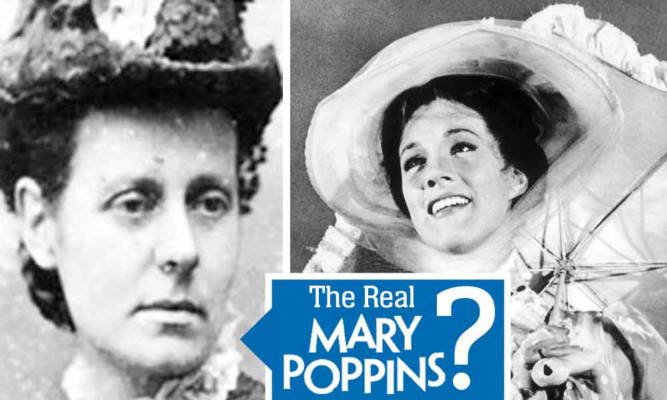
To many she’s the epitome of the prim English nanny but in reality Mary Poppins is as Scottish as a spoonful of haggis!
In the week of the 50th anniversary of the release of the film and the year of the 80th anniversary of the book being published, The Sunday Post can reveal the woman who inspired the iconic character was the daughter of a canny Scottish businessman.
Robert Archibald Alison Morehead the great-grandfather of Mary Poppins author PL Travers was the third son of the Episcopal Dean of Edinburgh. In 1841, when he was 28, he set sail for Australia with his wife Helen Buchanan Dunlop, settling in Sydney.
The shawl and cloth manufacturer was appointed manager of the Scottish Australian Company, an investment firm and went on to make his fortune in moneylending and mortgages.
The young Scottish couple had four children Robert, Boyd, Helen and Jane and it was Helen who was to prove the inspiration for Mary Poppins. While the two boys were taken back to Scotland for schooling, Helen and Jane were taught by a nanny. Perhaps it is this that helped formed Helen’s nanny-ish character.
Known as Aunt Ellie to young Pamela Lyndon Travers, who would go on to create her famous character in 1934, the similarities are obvious.
Valerie Lawson, author of Mary Poppins, She Wrote and expert on the life of Pamela Travers, is certain of Mary Poppin’s Scottish roots.
She says: “If you want to know who Mary Poppins was all you have to do is look at Aunt Ellie. She had the umbrella and the no-nonsense attitude, but was also helpful and loving.
“Many of her phrases and mannerisms are also used by Mary Poppins.
“Aunt Ellie was definitely the prototype for the character. In fact, Pamela Travers later wrote in a private book that Aunt Ellie was where she got the idea.”
When Ellie was a teenager her Scottish mother Helen died and she had to take on a motherly, nannying role in the family home. She later wrote: “At 15, I had to take up housekeeping. I was terrified . . . and I am afraid I was not much of a housekeeper, but I did my best for father.”
Ellie later brought up Pamela Travers’s mother Margaret following the death of Margaret’s father, Ellie’s brother Robert. And young Pamela spent a lot of time with her great aunt as a youngster, being sent alone on the epic train journey from her family’s home in Queensland to stay with Aunt Ellie in Sydney.
“Aunt Ellie was a major influence on Pamela,” says Valerie Lawson. “In fact, the Scottish Morehead side of her family influenced her deeply. They were very proper people and Pamela affected a very grand style herself as a result.”

Enjoy the convenience of having The Sunday Post delivered as a digital ePaper straight to your smartphone, tablet or computer.
Subscribe for only £5.49 a month and enjoy all the benefits of the printed paper as a digital replica.
Subscribe